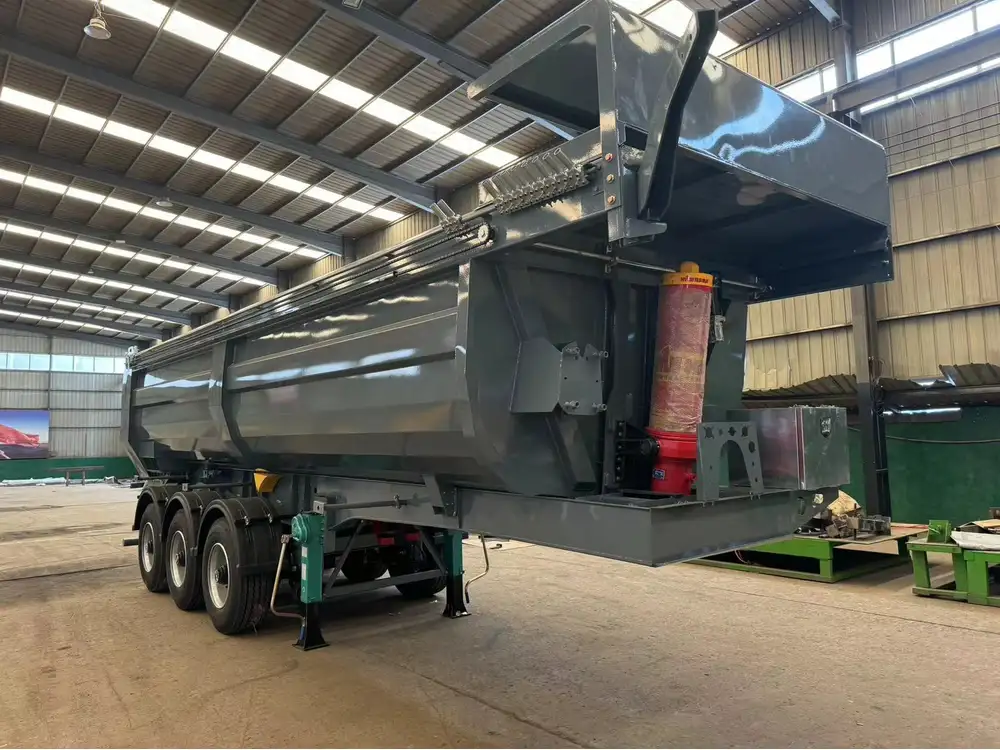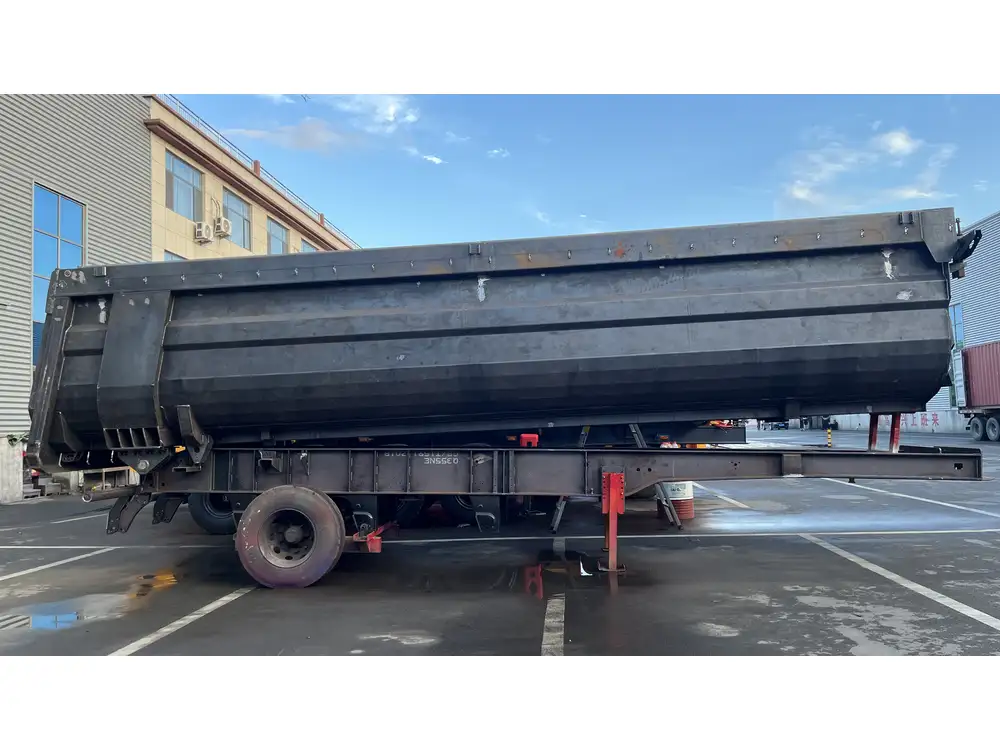In the bustling world of logistics and transportation, the ability to efficiently manage your fleet is paramount. One critical inquiry that often arises is, “Can I pull a repairable semi-trailer?” This question unpacks a multitude of considerations ranging from legality and safety to economic viability and overall functionality. This guide delves into the nuances of towing repairable semi-trailers, equipping you with the insights necessary to make informed decisions.
Understanding Repairable Semi-Trailers
Definition and Condition Assessment
A repairable semi-trailer typically refers to a trailer that, while it may have sustained damage—be it structural, cosmetic, or mechanical—still holds the potential for restoration. The assessment process begins with a comprehensive evaluation, often segmented into these criteria:
| Criterion | Description |
|---|---|
| Structural Integrity | Inspection of frame, axles, and connections to determine stability. |
| Mechanical Condition | Evaluation of brakes, wheels, and couplings for operational safety. |
| Electrical Systems | Checking the wiring, lights, and indicators for functionality. |
| Tires and Suspension | Assessment of tire wear and suspension components for comfort. |

Types of Damage
Understanding the types of damage a semi-trailer can sustain is crucial for establishing if it’s repairable. Common forms include:
- Cosmetic Damage: Scratches, dents, and paint issues that do not affect performance.
- Mechanical Damage: Issues like faulty brakes or malfunctioning axles that impair functionality.
- Structural Damage: Significant harm that compromises the trailer’s structural integrity.
Legal Considerations for Towing a Repairable Semi-Trailer
Licensing and Regulations
One of the pivotal considerations involves local and federal regulations which can shape your ability to tow a repairable semi-trailer. Below are critical points to ensure compliance:
- Weight Limitations: Ensure the total weight of the trailer, when loaded, does not exceed the towing vehicle’s capacity.
- Licensing Requirements: Operators often need a specific class of driver’s license tailored for towing heavy loads. Verify if you hold the appropriate credentials.
- Registration Status: The semi-trailer must be registered with the appropriate authorities. If it is categorized as salvage or non-operational, additional steps may be required for legal towing.

Insurance Implications
When considering towing a repairable semi-trailer, it is imperative to review your insurance policy. Key considerations include:
- Coverage: Verify that your policy includes coverage for repairable trailers.
- Liability: Understand who holds liability in the event of an accident involving a repairable trailer.
Safety Protocols for Towing Repairable Semi-Trailers
Pre-Towing Inspection Checklist
Before embarking on the towing of a repairable semi-trailer, conducting a thorough inspection is paramount. A useful checklist includes:
Ball Hitch and Coupling Check:
- Ensure the hitch aligns correctly and is securely locked.
Brake Functionality:
- Test brakes to ensure they operate smoothly.
Tires Inspection:
- Confirm tire pressure is adequate and check for any noticeable wear.
Lighting Systems:
- All lights and signals should be operational. This includes brake lights, turn indicators, and license plate lighting.
Load Distribution:
- Ensure the load is evenly distributed to maintain balance during towing.

Best Practices During Towing
Employing best practices will not only enhance safety but also improve efficiency:
- Speed Regulation: Maintain recommended towing speeds, as excessive speeds can reduce control.
- Avoid Sharp Turns: Be cautious with turns, as they can affect the stability of both the towing vehicle and the trailer.
- Braking Distance: Allow for greater stopping distances, especially when towing heavy loads.
Economic Importance of Repairable Semi-Trailers
Cost-Benefit Analysis of Repairing Semi-Trailers
Before deciding to repair a damaged semi-trailer, it’s essential to conduct a thorough cost-benefit analysis. Key factors to consider include:
- Repair Costs: Estimate the total cost of repairs, including parts and labor. This often requires obtaining quotes from multiple service providers.
- Depreciation and Value Recovery: Assess the semi-trailer’s current market value versus projected recovery post-repair. Evaluating the potential market demand for repaired semi-trailers is crucial.
- Operational Downtime: Calculate lost revenue during the repair period. This often factors into the economic viability of pursuing repairs.

Potential Savings from Repairable Semi-Trailers
By choosing to repair rather than replace semi-trailers, businesses can realize significant financial advantages. Possible savings avenues include:
- Reduced Equipment Acquisition Costs: New semi-trailers can be cost-prohibitive. Repairing extends the lifespan of existing assets.
- Tax Incentives: Some jurisdictions offer tax deductions for repair expenses, allowing companies to recoup some of their investment.
Alternatives to Towing Repairable Semi-Trailers
Renting or Leasing
In instances where repair seems unfeasible, consider renting or leasing alternatives. This strategy provides flexibility without the long-term financial commitment of purchasing new equipment.

Utilizing Flatbed Trailers
When the damage is too extensive for safe towing, flatbed trailers present an option for transporting repairable semi-trailers. This method ensures safety during transit, although it may involve additional logistical planning.
| Alternative | Pros | Cons |
|---|---|---|
| Renting or Leasing | Flexible, no long-term investment | Potentially higher costs |
| Flatbed Trailers | Greater safety during transport | Requires additional logistics |
Common Questions and Misunderstandings
Can All Semi-Trailers Be Pulled in a Repairable Condition?
Not every repairable semi-trailer can be legally or safely towed. Rigorous inspections, evaluations, and conformity to legal regulations are imperative prerequisites.

What to Do If You Encounter Problems While Towing
If towing a repairable semi-trailer presents unexpected complications, here are initial actions to consider:
- Pull Over Safely: Find a level and safe area to stop as quickly as possible.
- Conduct a Quick Assessment: Look for visible issues such as a damaged tire or loss of braking efficiency.
- Contact Roadside Assistance: If you are unable to diagnose or rectify the issue, calling for professional assistance is paramount for safety.
How to Ensure a Seamless Repair Process Post-Towing
Post-towing, ensure you document any damage caused during transport. This will aid in transparency with service providers and protect your interests within warranty claims. Creating a clear plan with a reliable repair shop and obtaining a timeline for repairs is essential regarding operational continuity.
Conclusion
Navigating the complexities of pulling a repairable semi-trailer entails a thorough understanding of regulations, safety protocols, economic ramifications, and the myriad of decisions that accompany towing operations. By conducting diligent assessments and remaining informed of best practices, logistics professionals can confidently engage with repairable semi-trailers, enhancing their fleet’s efficacy and operational longevity.
With this knowledge, you are now equipped to address concerns regarding pulling repairable semi-trailers, ensuring safety and compliance while maximizing cost efficiency. As the logistics industry evolves, staying updated on trends and regulations will continue to play a pivotal role in outpacing the competition.



